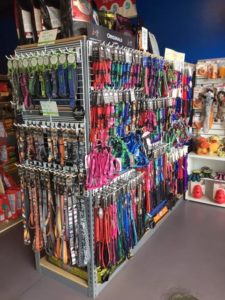In the 90’s it was called “re-engineering,” when consumers were using Windows 95 and the necessity for a pager was still palpable. Now we refer to this entrepreneurial zeitgeist as “disrupting.” It is the scaffolding of entrepreneurialism. When a tech innovation, new product, or business concept pivots the way things are done, turning tradition on its head, this is disruption. Market disruption is providing something so innovative consumers didn’t even know they needed or wanted that thing. Think of OrangeTheory Fitness. The gym franchise reformed how people exercise and the means of working out.
The Baby Boomers are largely credited with initiating big-box gym franchising into the wellness industry. This expanded revenue and opened markets that previously didn’t exist. OrangeTheory and other disruptive innovations have expanded on this premise.
Four pioneers in their respective industries have revolutionized business concepts and consumer standards. These companies changed the way consumers purchase. They changed the way businesses could operate.
The Coffee Monolith, Starbucks
Starbucks began in Seattle’s Pike Place Market in 1971. The company took Coffee, an ordinary commodity, and made it extraordinary—worth $4.
Since the first store, Starbucks has obviously seen rapid growth. The shops are a ubiquitous presence with over 24,000 locations in 69 countries. Iconic CEO, Howard Schultz, signed on with the company in 1987. Shultz vowed to “disrupt the coffee industry.” Schultz has also worked for Nike and Lego, honing both companies’ pioneering vision.
The company provides keystones in the coffee segment like espresso, specialty roasts, ground coffee, and premium teas, but as the years went on, expanded into food items. Selected evening stores also carry beer and wine.
What makes Starbucks such a model of disruption is the company’s pursuit in marketing. Strategic partnerships with companies like Lyft and Spotify have interwoven marketing with loyalty programs. Customers can earn stars through purchases in these third party platforms. This drives customer loyalty and retention. These tech innovations also make being a Starbucks customer more convenient than ever.
Starbucks holds the leading position in digital, card, loyalty, and mobile marketing.
First of its Kind, Massage Envy
The most prevalent franchise in the massage therapy sector is incontestably, Massage Envy. Beginning in 2002, the founder’s vision was to offer affordable massage therapy at convenient mini-spas that would stay open nights and weekends. Before Massage Envy, many sought out massage therapy at expensive luxury-spas, medical offices, or in the spare bedroom of therapists.
The franchise is unique on many levels. Nothing like this existed before. The membership and revenue model are new concept to massage therapy. Massage Envy made a recurring revenue stream for the franchise. This gave the membership affordability. The franchise then opened locations in strip malls giving them the convenience factor.
The company boasts a 99.1% success rate with only 9 stores closing. They also have a 1.64 million national member base.
Since Massage Envy was so unique they control the largest share of the market. Many similar business concepts in massage therapy franchising have gained similar momentum like Hand and Stone, and Elements Massage, but Massage Envy was the precursor to these. Massage Envy cleared an unseen market gap.
Tech Innovator, OrangeTheory Fitness
This gym franchise is credited with the ‘uberization’ of the health and wellness economy, as the “the new science of fitness.”
In the wake of Planet Fitness, Kosama, and dozens of other gym franchises all saturating the marketplace, OrangeTheory did something no other franchise thought to do. They developed the consumer relationship between the data of health science with an exercise studio.
The concept behind OrangeTheory is leading participants into a heart-rate zone known as “excess post-exercise oxygen consumption,” or EPOC. When customers go to a studio for a workout, they are fitted with heart-rate monitors. This tracks clients through five heart-rate zones organized into a color spectrum. The heart-rates are displayed on screens in the studio.
The goal is for clients to spend at least 12-20 mins in the orange EPOC. The franchise makes the claim that this is how clients can burn 900 calories in a workout. Clients can also maintain excessive calorie burning for up to 36 hours after they visit an OrangeTheory Fitness.
What makes this gym franchise a disruptor is a harmonization between software apps and brick-and-mortar. Founders knew that the fitness industry was opening into data mining. OrangeTheory knew clients wanted to track their progress as they worked out via their smartphones. This was the first instance where all the convenience of a gym met all the convenience of a smartphone app.
Splash and Dash Groomerie & Boutique
In 2009, founder and CEO, Dan J, Barton recognized huge growth in the pet industry as a sector that is recession-proof. Barton revolutionized pet grooming. With industry growth at 269% since 1994, and big-box industrial pet stores dominating the now $62.75 billion dollar market, a more intimate up-scale pet franchise was needed.
Splash and Dash has been featured on major media platforms like Fox News and ABC. The company has also been widely awarded.
- Pet Retailer of the Year, Pet Product News
- Readers’ Choice Best Grooming in Hudson Valley
- 3rd in Top Ten Franchises to Sweep the Nation, INC Magazine
- Fastest Growing Companies 500 List, INC and Forbes Magazine
- Ranked 17 In Tampa Bay FL, Company, INC Magazine
How is the company pioneering the pet grooming industry?
The company uses business models adapted from OrangeTheory, Starbucks, and Massage Envy and translated them into the dog grooming industry.
Marketing techniques Starbucks uses like loyalty programs aimed at customers’ convenience is one of the staples of Splash and Dash business concepts. Seasonal company-wide marketing campaigns use these concepts to retain customers and continuously bring in new clientele base.
Alos, a huge deficit in the dog grooming industry was the lack of technological innovation. Mom and pop dog grooming shops were still using antiquated methods like card appointment books. Before opening as a Splash and Dash, many shop owners’ stores didn’t even own a computer.
The terminal software that Splash and Dash uses is similar to OrangeTheory. It allows customers to track their dog’s wellness and appointments. The software also alerts customers to various promotions and sales. This inspires repeat business and retail opportunity. The proprietary software also handles POS, inventory, regulates employee functions and much more.
One of the strongest business concepts Splash and Dash integrates is recurring revenue through memberships. This company is the only franchise to offer customers a monthly unlimited membership. Now, a dog can be groomed as often as needed. What makes this an opportunity for revenue is repeated retail engagement. Like Massage Envy, clients can come in for a service and also purchase any products they would need.
Splash and Dash is a true original disruptor as the company explored a glaring market gap. Pet parents were aggravated by traditional means of pet grooming. Pet parents were forced to use big-box industrial pet grooming locations or overly expensive grooming shops. The industry needed a technologically innovative revamp. Splash and Dash caters to customers who need to groom their dogs often and want to take them to a place they can trust.
Splash and Dash Groomerie & Boutique fills this role with passion and excellence.
Follow Splash and Dash Groomerie & Boutique:
 Last Month, March 5-13th CEO, Dan Barton, and special project manager, Andrew Shaffer, headed out west to the golden state of California to support franchise shops. On the way back to corporate headquarters the team also stopped at the Meridian shop in Idaho.
Last Month, March 5-13th CEO, Dan Barton, and special project manager, Andrew Shaffer, headed out west to the golden state of California to support franchise shops. On the way back to corporate headquarters the team also stopped at the Meridian shop in Idaho. Next up was Mark Levy over in La Verne. Mr. Levy has been with the company as a licensee for eight years and just recently made the transition to a full franchisee. Levy recognized the importance to convert and corporate visited for commendation and to ensure all logistics are running smoothly. “I felt quite honored to be recognized in this way,” Mark tells us, speaking on his recent ribbon cutting ceremony.
Next up was Mark Levy over in La Verne. Mr. Levy has been with the company as a licensee for eight years and just recently made the transition to a full franchisee. Levy recognized the importance to convert and corporate visited for commendation and to ensure all logistics are running smoothly. “I felt quite honored to be recognized in this way,” Mark tells us, speaking on his recent ribbon cutting ceremony. 